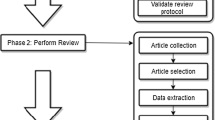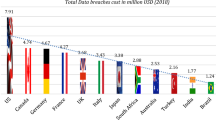Abstract
We consider the problem of designing schemas for deductive databases. The design problem is to construct a database schema that supports, at minimal expected cost, a given set of database transactions. Our results include a formal definition of both a deductive database schema and a schema transformation. A schema transformation is used in the design process to transform one schema into another, with the goal of reducing the expected database costs. Our design methodology defines the concept of a schema transformation within the context of the clause-based deductive database model. The IDB of the schema that results from the design process includes clauses sufficient for a theorem prover to map queries stated against the original schema into queries against the (more cost effective) resulting schema. This allows users to interact exclusively with the initial schema, while the schema that results from the design process specifies the actual structure of the implemented database. In other words, the initial schema serves as the logical schema for the database, and the result of the design process serves as its physical schema.
Similar content being viewed by others
References
Astrahan M. M. and Chamberlin D. D., ‘System R: a relational approach to data management’, ACM Transactions on Database Systems, 1, 97–137 (1976).
Date C. J., An Introduction to Database Systems, Vol. I, Addison-Wesley, Reading, Massachusetts (1982).
Gallaire H. and Minker J., Logic and Databases, Plenum Press, New York (1978).
Gallaire H., Minker J., and Nicolas J.-M., ‘Logic and databases: a deductive approach’, ACM Computing Surveys 16, 153–185 (1984).
Grant J. and Minker J., ‘Optimization in deductive and relational database systems’, in Advances in Data Base Theory, Vol. 1, (eds. H.Gallaire, J.Minker, and J.-M.Nicolas), Plenum Press, New York, pp. 195–234 (1981).
Helman, P., ‘A family of NP-complete data aggregation problems’, submitted to Acta Informatica (also Technical Report CS84-6, Computer Science Department, University of New Mexico, (1984)).
Helman, P. and Veroff, R. ‘Designing deductive databases’, Technical Report CS86-5, Computer Science Department, University of New Mexico (1986).
Helman, P., Veroff, R., Jensen, K., and Schifani, D., ‘Investigations into a greedy algorithm’, working paper.
Henschen L. J. and Naqvi S., ‘On compiling queries in recursive first-order databases’, JACM 31, 47–85 (1984).
Henschen L. J. and Yahya A., ‘Deduction in non-Horn databases’, J. Automated Reasoning 1, 141–160 (1985).
March S., ‘Techniques for structuring database records,’, ACM Computing Surveys 15, 45–79 (1983).
Reiter R., ‘Deductive question-answering in relational databases’, in Logic and Databases (eds. H.Gallaire and J.Minker), Plenum Press, New York, pp. 149–178 (1978).
Teorey T. and Fry J., Design of Database Structures, Prentice Hall, Englewood, N.J. (1982).
Ullman J., Principles of Database Systems, Computer Science Press, Potomac, Maryland 1982.
Yao S. and Kunii T., Data Base Design Techniques, Springer-Verlag, New York (1982).
Author information
Authors and Affiliations
Rights and permissions
About this article
Cite this article
Helman, P., Veroff, R. Designing deductive databases. J Autom Reasoning 4, 29–68 (1988). https://doi.org/10.1007/BF00244512
Revised:
Issue Date:
DOI: https://doi.org/10.1007/BF00244512




